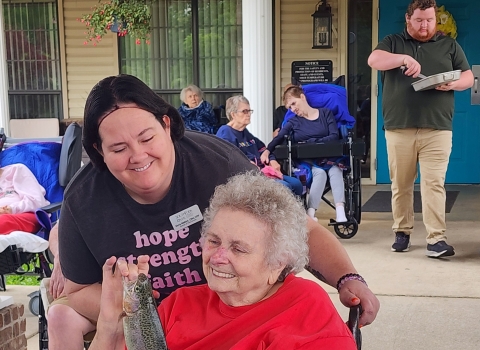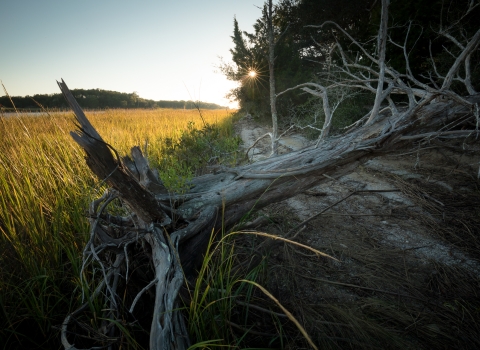On a warm, early-September morning on the coast of Rhode Island, U.S. Fish and Wildlife Director Martha Williams took in the view of Second Beach and the Atlantic Ocean. Like any other visitor to Sachuest Point National Wildlife Refuge, she relished the wildness.
Williams was enjoying a vista some had never seen. She was standing on a new, ADA-accessible platform made possible by a team of Service maintenance professionals from around the country funded by the Great American Outdoors Act Great American Outdoors Act
This landmark conservation law, enacted in 2020, authorizes the use of up to $1.9 billion a year in energy development revenues for five years for needed maintenance to facilities and infrastructure in our wildlife refuges, national parks, forests, recreation areas and American Indian schools.
Learn more about Great American Outdoors Act . It’s one of nearly 100 such projects completed in the three years since the act passed.
The Great American Outdoors Act is providing vital resources to address maintenance needs throughout the National Wildlife Refuge System. We receive about $95 million annually from the act for priority projects — think repairing trails, campgrounds, wildlife-viewing platforms, boat ramps, picnic shelters and scenic drives, and increasing hunting and fishing opportunities — all so we can offer a world-class experience in nature for the more than 67 million annual visitors to national wildlife refuges.
Using a portion of our Great American Outdoors Act funding, Service professionals from across the nation collaborate as Maintenance Action Teams to address our maintenance backlog in-house. These teams have completed 96 projects — making refuges more welcoming to visitors. Much of this work has also made our public lands more resilient to climate change climate change
Climate change includes both global warming driven by human-induced emissions of greenhouse gases and the resulting large-scale shifts in weather patterns. Though there have been previous periods of climatic change, since the mid-20th century humans have had an unprecedented impact on Earth's climate system and caused change on a global scale.
Learn more about climate change by reducing erosion, stabilizing shorelines, managing and preventing floods, and repairing wastewater and drinking water systems.
At the Rhode Island National Wildlife Refuge Complex, a Maintenance Action Team assisted with the following:
At Sachuest Point Refuge, in addition to rebuilding the Sakonnet Overlook to include a ramp for universal access, the trail system was graded, making it ADA-accessible for the nearly 300,000 annual visitors.
At Trustom Pond Refuge, a large, decaying pole barn was removed, and a new one to house refuge boats and equipment will be built. The Otter Point Trail was graded and resurfaced to provide universal access along Farm Pond to the Otter Point lookout on Trustom Pond.
And at Ninigret Refuge, a section of siding on the combined visitor center and refuge complex headquarters was repaired and replaced.
These projects are tangible examples of Americans’ tax dollars at work.
“People support that which they help build, so when we’re able to connect people with nature, then they’re more likely to support it and protect it going forward,” Williams said.
Only Mother Nature can create a view like the one at Sachuest Point, but it took the Great American Outdoors Act to make it accessible to all.





